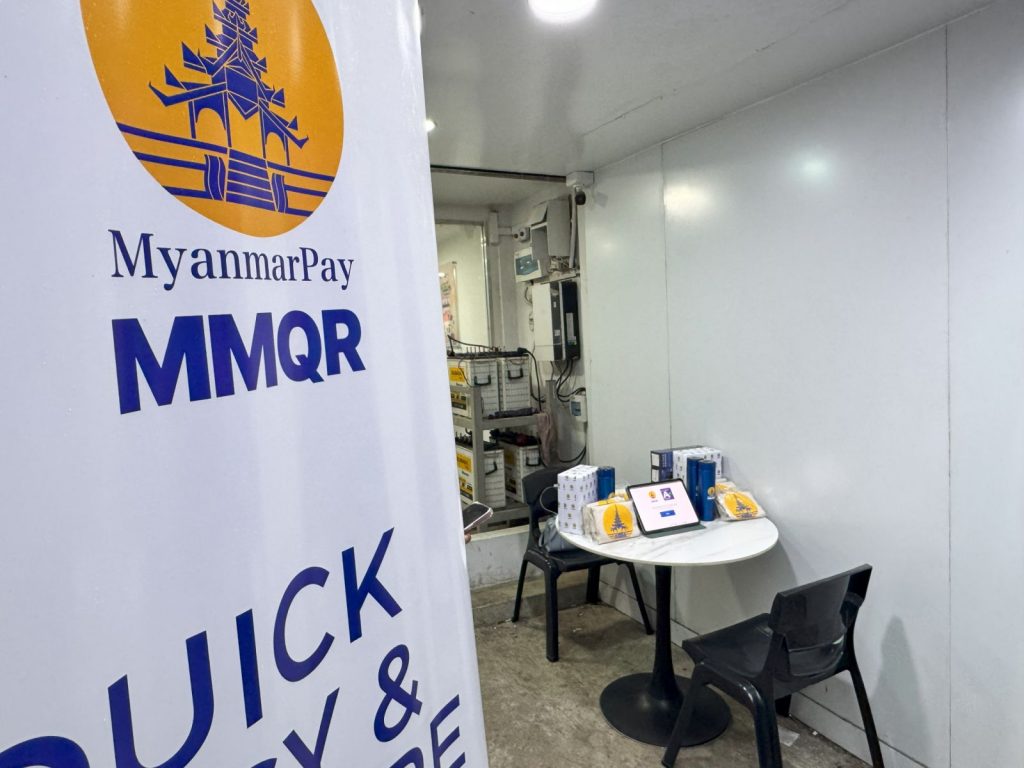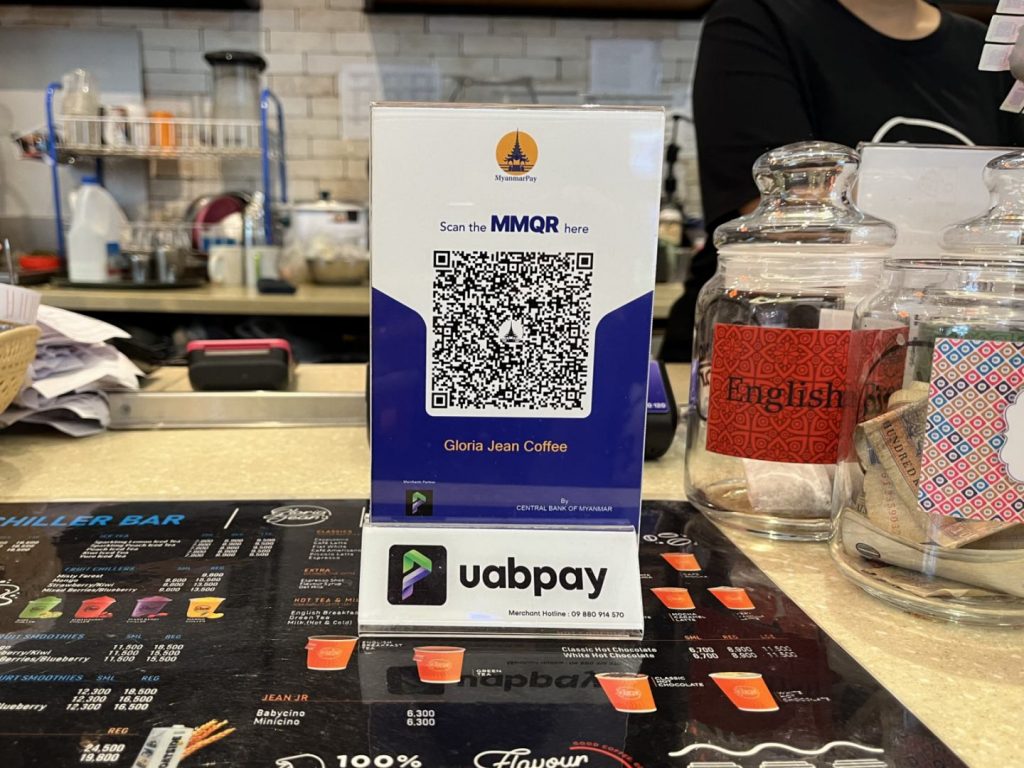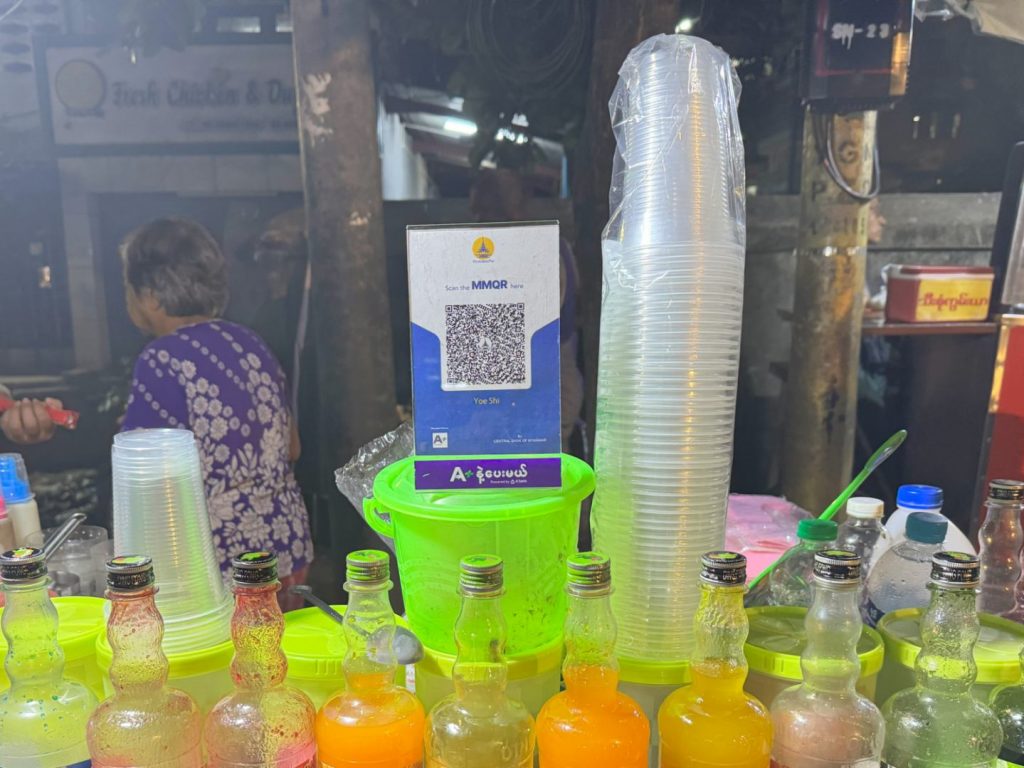MyanmarPay Brings Seamless QR Payments to Everyday Transactions
Whether you’re dining out or shopping, you may have noticed that instead of seeing multiple bank QR codes at payment counters as in the past, now there is usually just a single MyanmarPay QR Code Stand. This article explains MyanmarPay (MMQR) in detail—helpful for both those who are new to the system and those who want to understand it better.
In today’s rapidly advancing digital era, being able to offer customers a smooth and convenient payment experience has become the number one priority for every business. Problems often arise when the merchant and the customer use different bank accounts or digital wallets—for example, when a shop only has KBZPay but the customer only has AYAPay. That’s where MyanmarPay (MMQR) comes in: a unified QR scan system that allows customers to pay using any preferred bank or wallet, while merchants only need one QR code to accept payments.

Image: MyanmarPay
What is MyanmarPay (MMQR)?
MyanmarPay (MMQR) is a system overseen by the Central Bank of Myanmar and operated by PayPlus Co., Ltd.. It was introduced to enhance Myanmar’s financial sector and provide high-quality financial services accessible to all citizens.
Since it is a QR scan-based system, there is no need for users to download a separate app or open a new account. Payments can be made directly through any existing mobile banking or e-wallet app. For merchants, having just one MyanmarPay QR code enables them to accept payments from any bank or wallet, making transactions faster, easier, and more secure.
A business owner shared: “After introducing MyanmarPay MMQR at my shop, payments became much easier for customers, and I noticed a clear increase in the number of customers.”

Image: MyanmarPay
How to Use MyanmarPay (MMQR)
For customers, the process is simple: just open your existing banking or wallet app, scan the merchant’s QR code, enter the payment amount, and confirm. There are no additional charges or restrictions. With MMQR, payments can be made anytime, anywhere, at any shop, using any bank or wallet.
A Yangon-based user commented: “I’ve always preferred cashless payments for their convenience. With MMQR, it suits me perfectly. I’m happy to see Myanmar moving towards a cashless society.”
However, before confirming a payment, customers must carefully check that the merchant’s name matches, the amount is entered correctly, and the transaction success notification is received.
For merchants, it’s important to note that MyanmarPay (MMQR) itself will never contact users directly. Merchants should instead communicate with their partner banks or payment services for setup and support. During transactions, they should verify the payment receipt details (payer’s name, date and time, amount, and merchant name). In rare cases where the payment is deducted from the customer’s side but not reflected in the merchant’s app, the customer should be informed that the transaction failed and the amount will be refunded, while the merchant should also contact their app’s hotline for assistance.

Image: MyanmarPay
A merchant shared their experience: “Before MMQR, we faced problems when customers’ wallets didn’t match the payment methods we accepted. But after using MMQR, payments became smoother. My partner bank also provides 24/7 customer service. The best part is that customers don’t even need extra explanation—they can simply scan and pay.”
As of May 2025, more than 150,000 businesses across Myanmar are already using MyanmarPay (MMQR). This means you can shop without carrying cash—just scan the MyanmarPay QR code and pay instantly.
MMQR started with P2M (Person-to-Merchant) payments, but in the future, it aims to expand to utility bill payments, peer-to-peer transfers, and international remittances, making it a world-class QR payment system.
MyanmarPay (MMQR) is a significant step forward for Myanmar’s digital financial sector. For more details, visit their Facebook Page MyanmarPay MMQR or Website https://myanmarpay.com.mm/.






